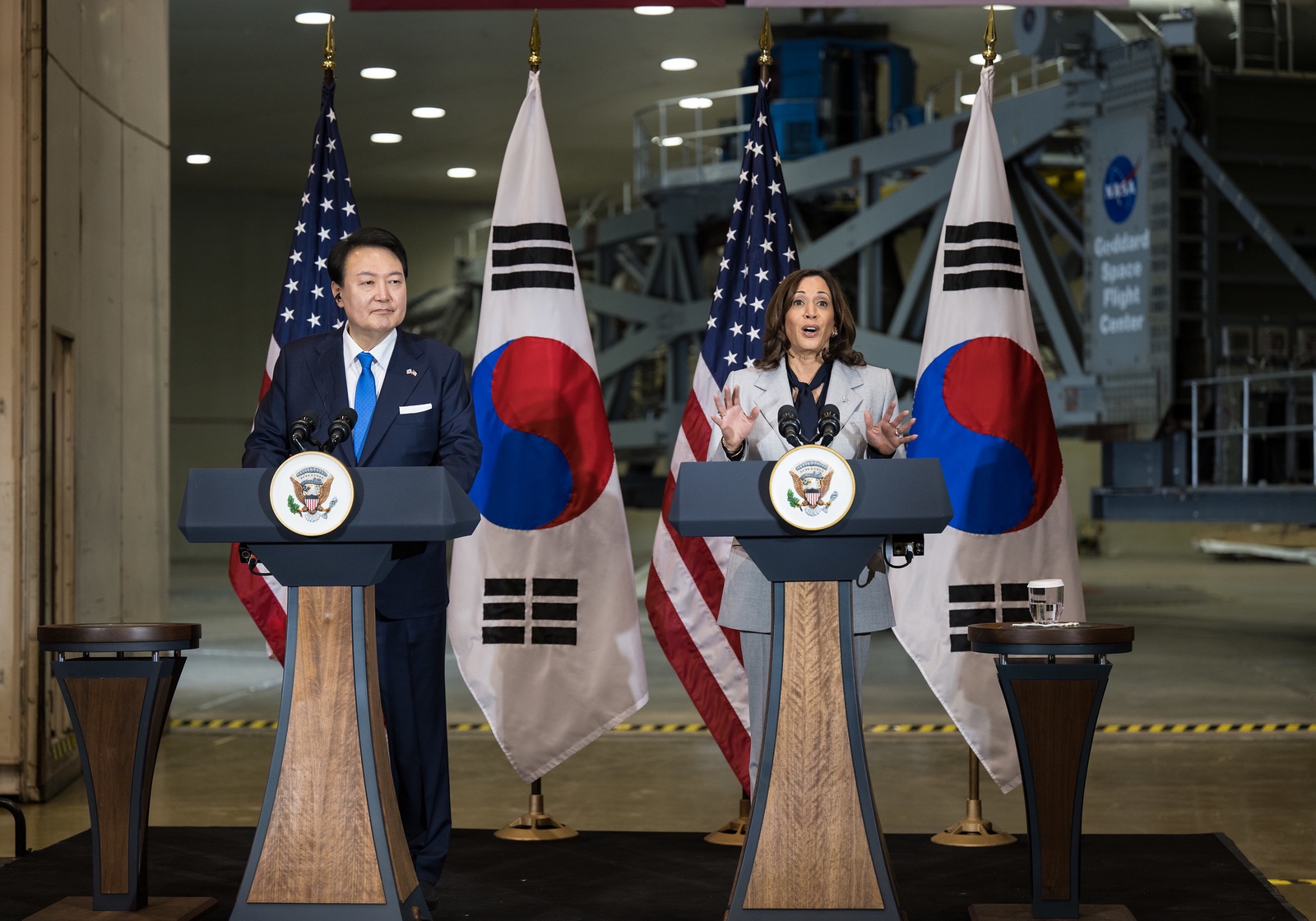WASHINGTON — The United States and South Korea signed an agreement April 25 to enhance cooperation on space activities ranging from lunar exploration to Earth science, while providing few specific about those efforts.
The agreement, formally called the Joint Statement of Intent for Cooperation on Space Exploration and Science, was signed during a visit by South Korean President Yoon Suk-yeol to the United States that included a tour of NASA’s Goddard Space Flight Center.
Neither government released the text of the agreement, but a White House official, speaking on background, said it would cover activities in “areas of mutual interest” such as lunar science, Earth science and other space science activities, as well as space communications and navigation.
The agreement “will serve as a springboard for taking space cooperation between our two allies to the next level of a space alliance,” Yoon, speaking through a translator, said in brief remarks after the Goddard tour April 25.
The two countries are currently cooperating on South Korea’s first lunar mission, an orbiter called Danuri. That spacecraft carries a NASA-funded instrument, ShadowCam, to take images in permanently shadowed regions of craters at the lunar poles to look for evidence of water ice and other volatiles.
Vice President Kamala Harris said at the Goddard event that cooperation could expand to missions to the lunar surface. “South Korea will soon fly payloads through NASA’s Commercial Lunar Payload Services program,” she said, but offered no other details about that partnership.
In the CLPS program, NASA purchases payload space on commercial lunar landers that can also carry payloads from other commercial or government customers. In remarks April 25 at the meeting of the Lunar Surface Innovation Consortium, Brad Bailey, assistant deputy associate administrator for exploration in NASA’s Science Mission Directorate, said NASA was encouraging international partners to work directly with CLPS providers rather than have NASA arrange those payloads.
When NASA works with nations to fly payloads on CLPS missions, he said, “it actually takes away some of those potential non-NASA-sourced payloads” that could generate revenue for those companies. “That has an impact on the lunar economy overall, so we’re starting to encourage private entities as well as international partners to go direct to our vendors.”
Another area of cooperation that Harris highlighted in her remarks was Earth science. NASA recently launched Tropospheric Emissions Monitoring of Pollution (TEMPO), a hosted payload on an Intelsat communications satellite that will monitor air pollution over much of North America. TEMPO, built by Ball Aerospace, is similar to an instrument also built by Ball on a South Korean spacecraft, taking the same measurements over East Asia.
Harris said she would like to provide similar monitoring for the Southern Hemisphere, specifically Africa and South America. “This cannot be a global initiative if any nations around the world are excluded,” she said, announcing she was directing the National Space Council to expand that network. She didn’t elaborate on how the council, an interagency group, would do so.
Yoon emphasized the efforts he was leading to build up South Korea’s space sector, including creating a national space agency called KASA and long-term ambitions for lunar and Mars exploration.
“With KASA on the way, cooperation between KASA and NASA down the road will be the driving force behind forging a strong space alliance,” he said. That will start with what he called a “bilateral communication platform” to support joint projects and personnel exchanges.
